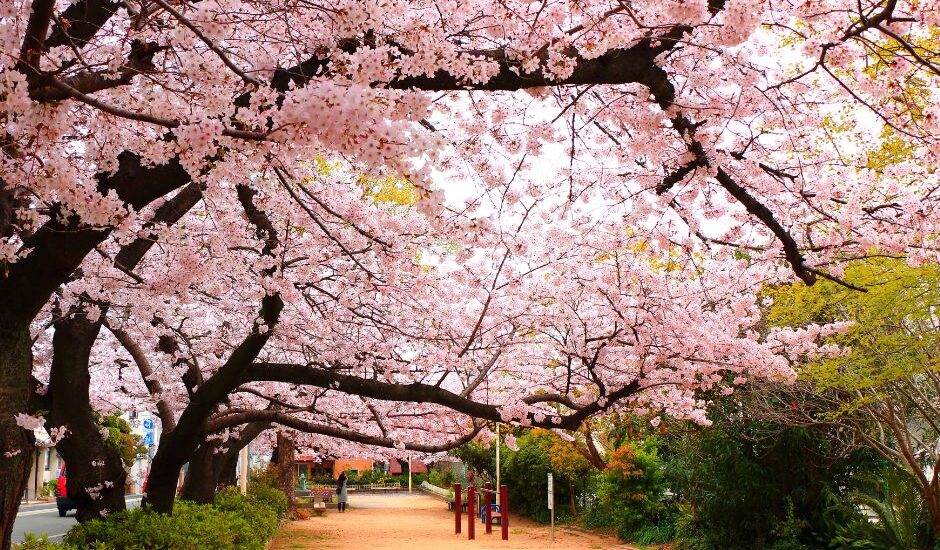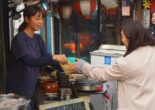This year’s cherry blossom festival will be a big one as it’s the first time in a few years that tourists can enjoy the fleeting beauty of sakura. To get the most out of your experience, here are some of the best spots to view the blooming cherry blossom trees and activities relating to sakura.

Get the timing right
Although most river banks and parks in Japan are lined with cherry blossoms, it’s not hard to find the “best place” to see sakura. The main issue is the timing, as these trees only go in full bloom for only a few days.
To avoid missing out on this encounter, you should include the viewing with your itinerary instead of planning your activities around it. You can expect that most prefectures and towns will have cherry blossom festivals, so you can check if the places you’re already visiting have one planned. This way, you minimize the chances of going somewhere for the sole purpose of viewing the cherry blossoms only to see they haven’t bloomed.
Then again, there are certain areas that have become tourist spots for their sakura trees. Yoshino in Nara Prefecture is one of them. The Mount Yoshino Cherry Blossom Festival is the place to be if you want to experience sakura trees in their full glory.

The area is within Japan’s sacred UNESCO World Heritage Sites, featuring pink trees as far as the eye can see (about 30,000 cherry blossoms), plus a mountain backdrop that will make viewers forget reality for a second.
So when should you go out for cherry blossom viewing? The Japan Meteorological Corporation released a more updated forecast on February 16, 2023, as to when the cherry blossoms are expected to flower (kaika) and reach full bloom (mankai) this year across Japan.

Here’s a table of the forecast per prefecture.

You can check out the following website for more updates or access each prefecture’s site for their hanami festival details which you can include in your itinerary.
Sakura-related activities
Although there are many historic sites, monuments, sacred or religious sites, and museums in Japan that are popular all throughout the year, activities that are sakura-related are usually held outdoors at parks or botanical gardens. Whether in Osaka Castle Park or Kyoto Botanical Gardens, anywhere outdoors is the place to be to fully enjoy the beauty of cherry blossoms.
With that said, picnics are a given during sakura festivals. Families and friends lay out their picnic mats and enjoy seasonal treats like sakura mochi under the cherry blossom trees. While you’re celebrating, you can opt for some sake which is the beverage of choice during such events.
No festival is complete without live performances, cultural displays, sakura-themed kiosks, and even paper lanterns towards the evening to cap off the festivities.
Ueno Park is another venue that holds a grand cherry blossom (also called “hanami”) festival, with the entrance showcasing more than 1,000 cherry blossom trees. It’s advised to find a spot for your picnic early as the place can get quite full for the festival.
Other noteworthy sakura venues are Moerenuma Park (Sapporo) and Goryokaku Tower, Fort Goryokaku (Hakodate) and Mt. Iwaki (Aomori) or northern Japan, Meguro River (Tokyo) and Yoyogi Park (Tokyo) for eastern Japan, Takato Castle Ruins Park (Nagano) and Ueda Castle Park (Nagano) for Central Japan, and Himeji Castle (Hyogo) and Kumamoto Castle (Kumamoto) for western Japan.
If you’re a Starbucks aficionado, the shops in Japan offer limited-edition sakura-themed coffee, mugs, and other merchandise that are ultra kawaii. These make for excellent souvenirs or to add to your collection. The same goes for other shops, as they feature cherry blossom merch during this period.

The meaning behind the sakura
These trees are not only gorgeous and majestic but hold a deeper meaning among locals who see them as a symbol of the circle of life. There is a concept called “mono no aware” or “the pathos of things” and “an empathy toward things” wherein the Japanese believe that things that are fleeting should be cherished.
Furthermore, the blooming period signifies the end of one period and the start of another, such as the end of a school year or a job and the bittersweet feeling that comes with it. The period also brings excitement for the start of something new.
Given the meaning behind cherry blossoms in Japan, it is crucial to remember that these living things are sacred, some of which are over 2,000 years old. The public should refrain from touching the trees, breaking off branches, or picking flowers. Still, you can get amazing photos while respecting the trees. Enjoy your hanami!



